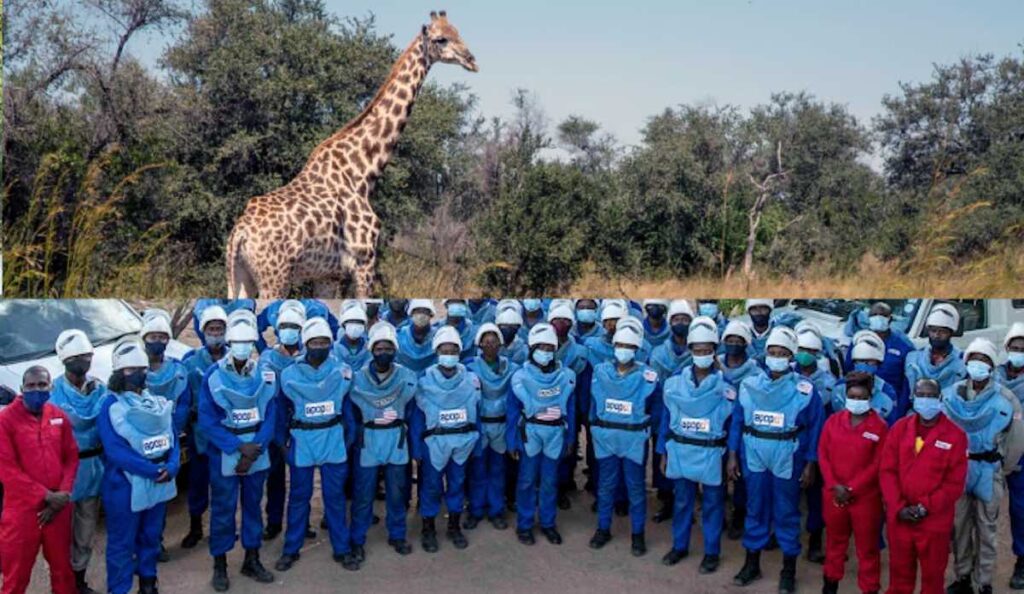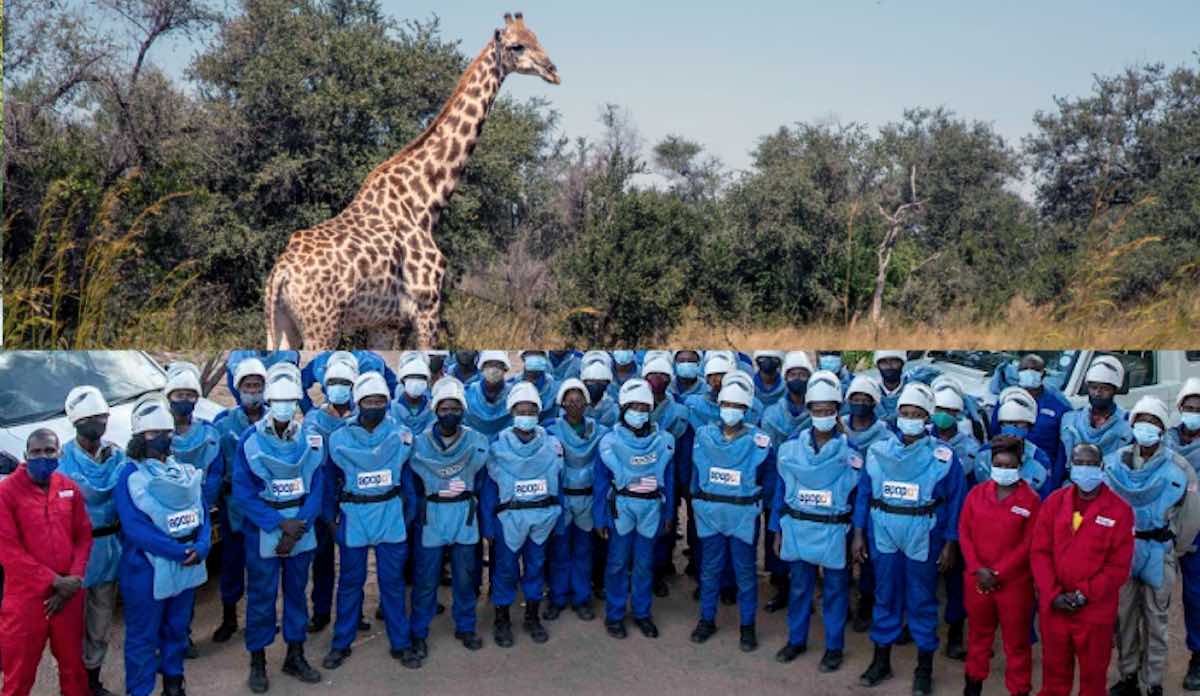A new project to demine seven million square meters of land, including a critical area inside the largest contiguous wildlife area in the world, is underway, thanks to a grant from the U.S. Government.

Removing the landmines laid four decades ago will help protect African species such as elephants, pangolins, and lions in a wildlife corridor that spans South Africa, Mozambique, and Zimbabwe.
The Dutch organization called APOPO (translated to English as Anti-Personnel Landmines Detection Product Development) has been tasked by the Zimbabwean government with clearing the dense minefield that includes the massive wildlife corridor inside the Great Limpopo Transfrontier Park, an effort that will also support opening up eco-tourism opportunities.
The grant allows APOPO to protect not only animals in the Sengwe Wildlife Corridor but also the local human populations and their livestock. With additional funding, APOPO aims to finish clearing the minefield by Zimbabwe’s 2025 landmine-free deadline.
Hero Rats
APOPO is the global non-profit best known for having trained African giant pouched rats to detect landmines for over 20 years—but in this effort they are using manual deminers more appropriate for the dense minefields in the Sengwe frontier.
“We are very enthusiastic and honored to take part in clearing the heavily mined areas along the Zimbabwe, Mozambique border to allow not only local communities use their land freely and without fear, but to allow safe movement for endangered wildlife and support overall conservation efforts,” said the Zimbabwe Program Manager for Anti-Persoonsmijnen Ontmijnende Product Ontwikkeling.
RELATED: This Rat Sniffs For Landmines In Cambodia–And Has Just Won A Gold Medal For His Life-Saving Work
The group has already cleared 45,000 square meters, and estimates it will find and destroy about 15,300 anti-personnel landmines planted during the 1970s Zimbabwe Liberation War by the Rhodesian Army which wanted to protect their border—laying about 2,500 mines per kilometer.
Tens of thousands of people live in close proximity to these landmines, which limit their access to resources such as water, grazing areas, and roads. One of the poorest, driest areas in Zimbabwe, up to 100 cattle are lost on this minefield each year, pushing some households into poverty.
LOOK: These Specially-Trained Dogs Have Saved 45 Rhinos From Poachers in South Africa—And Counting
The wildlife corridor extends into the famous Kruger National Park in South Africa, and Zimbabwe’s Gonarezhou National Park.
Kruger receives a massive influx of tourists (over 1.8 million visitors each year), which could potentially travel up the Sengwe Corridor and into Gonarezhou, which currently receives virtually no international tourists. If even a small fraction of the Kruger tourists made it to Gonarezhou, the positive economic implications for Zimbabwe would be significant.
POPULAR: African Elephant Poaching Has Fallen By More Than 50% Over the Course of the Last 6 Years
Zimbabwe is a USAID Resilience Focus country where the American government agency provides economic opportunities for communities that are susceptible to climate change and significant economic stresses, while conserving natural resources for sustainable livelihoods.
SHARE This Massive Good News on Social Media…




















